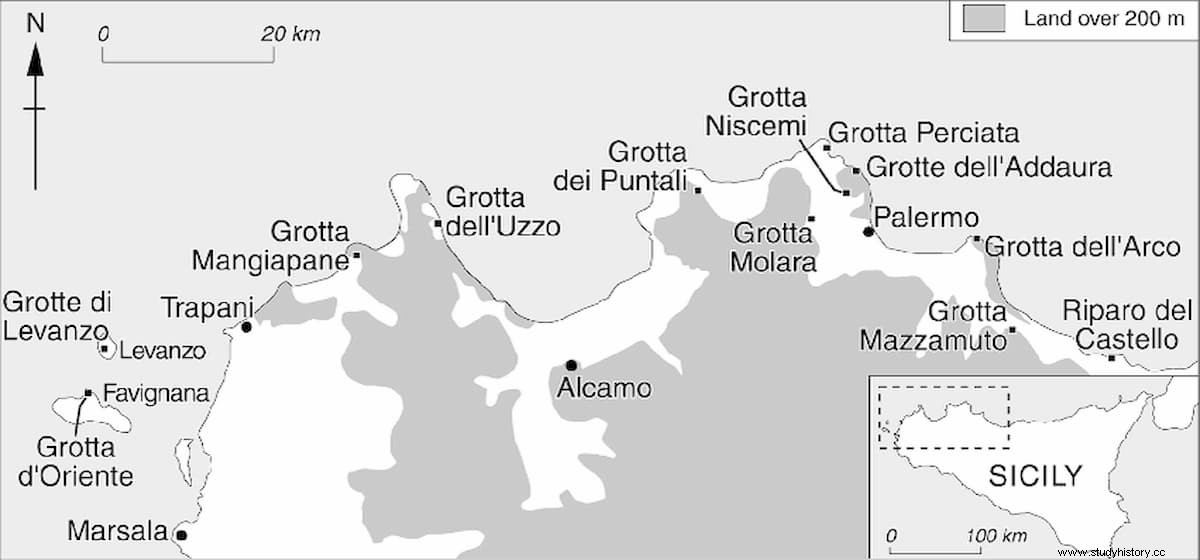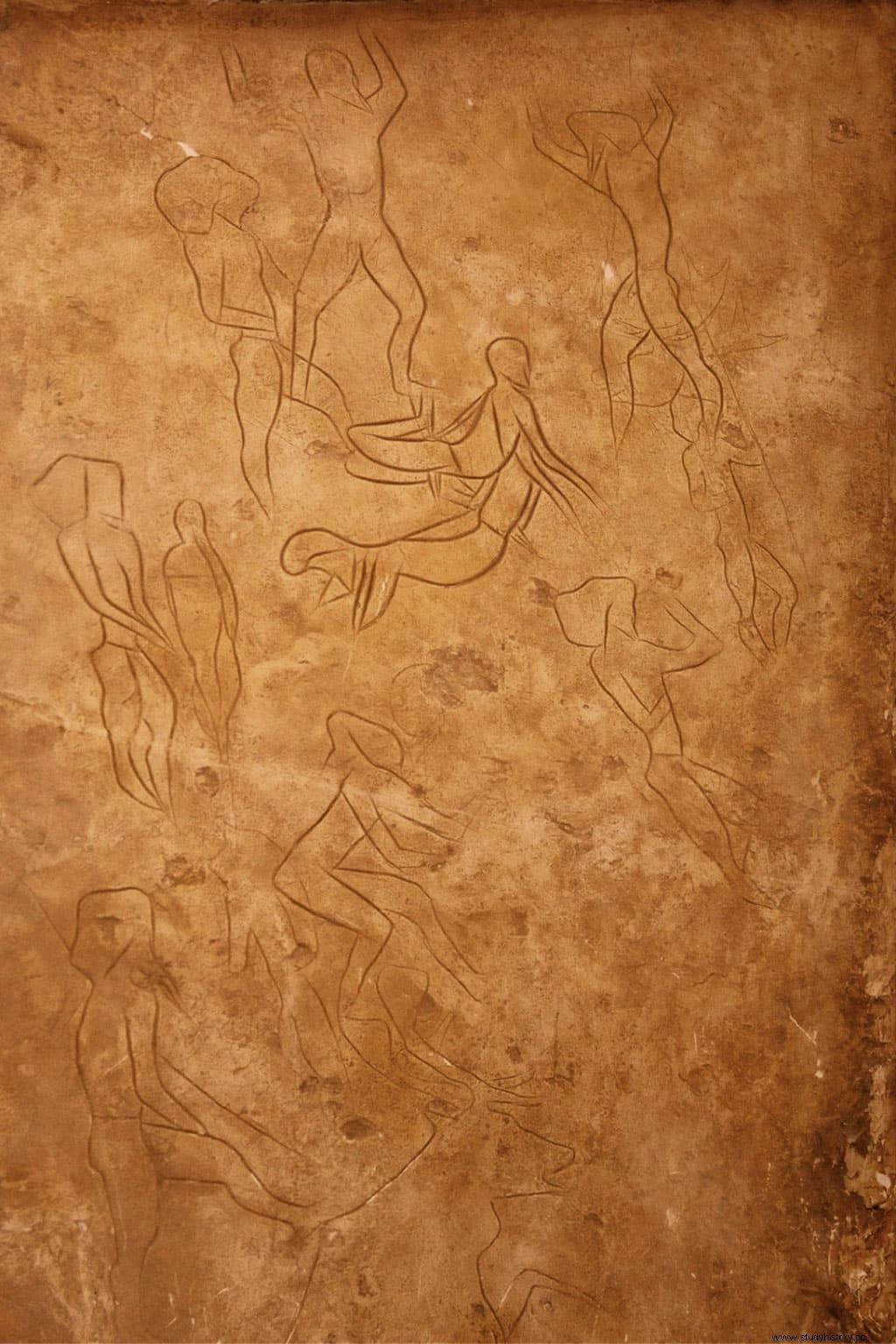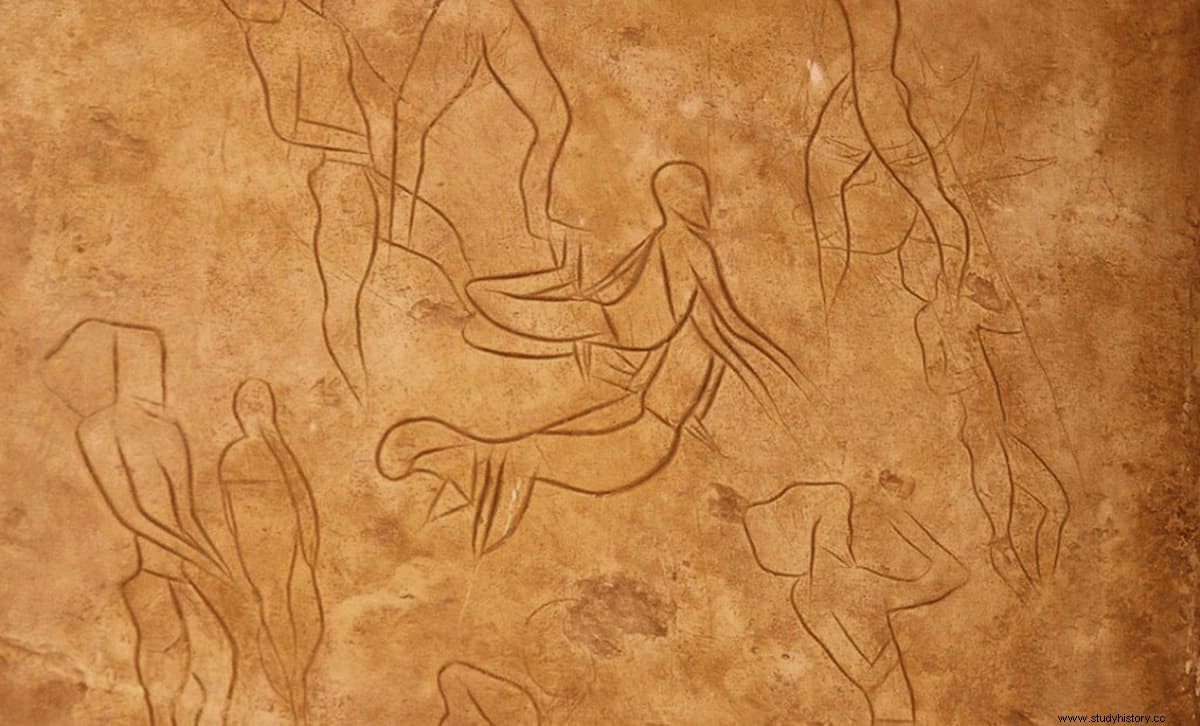The Addaura complex, located on the northeast slope of the Monte Pellegrino massif in northern Sicily, is made up of several caves that were used by the allies after the invasion of Sicily in 1943 as an ammunition store. Towards the end of the Second World War there was an accidental explosion in the magazine that caused the collapse of several walls of the complex, revealing an unexpected artistic treasure.

The caves, situated some 70 meters above sea level, were not unknown to the archaeologists and paleoanthropologists who examined them in the late 19th century. In the so-called Addaura Caprara o Cueva Grande Professor Gaetano Giorgio Gemmellaro found in 1866 a molar of a dwarf elephant (Elephas armeniacus ), deer, horse, and ox bones, and various Paleolithic flint tools.
But the appearance of parietal art in one of the caves, the so-called Grotta delle Incisioni (Cave of Engravings), was an important novelty. And it is that, unlike other Paleolithic caves such as Lascaux or Altamira, where mainly animals are represented, in Addaura the main protagonist is the human being. For this reason, they constitute a unique case within prehistoric art.

Archaeologist Jole Bovio Marconi, who since 1939 was the archaeological superintendent for western Sicily and who studied the engravings thoroughly after the find, dated them to the Mesolithic period at between 6,000 and 12,000 years old. Located on the left and rear walls of the grotto, they present numerous anthropomorphic figures along with others that represent elks, fallow deer, horses and oxen.
The scene that most interests researchers of those found in the Addaura caves shows a group of people arranged in a circle surrounding two other figures whose heads are covered and their bodies arched backwards. Curiously, the hands of the characters are not represented, and the feet only in some of the figures. In contrast to the naturalistic treatment of the bodies, the heads and faces are depicted in a strange way, as if covered by a mask, which could indicate that they are shamans. Some figures raise their arms as if in a folk dance, but in general no one has been able to determine what they are doing.
Jole Bovio and Paolo Graziosi interpreted the scene as the representation of a group of dancers arranged around a pair of acrobats performing evolutions, which would be an initiation ritual to puberty or virility. Others, like Sebastiano Tusa, believe that the two central figures would be victims and not acrobats, that they would be tied by a rope that goes from the neck to the ankles.
Mezzena, on the contrary, considers that they would be acrobats, that they would have been thrown by the characters who have their arms raised, and received by the characters with their arms outstretched.
Bolzoni, in his study published in 1985, believes that it is the representation of an event in two scenes, based on the presence of a female character with a full sack on her shoulders, and on the other side the same character with an empty sack hanging from his legs . It would be the embodiment of the sacrifice of two young people and their subsequent burial.

In any case, what all researchers agree on is that the scene is unique in the panorama of Palaeolithic rock art worldwide. And that the human figures of the Addaura are, in the words of Paolo Graziosi, resolutely realistic and executed, albeit in their graphic simplicity, with great skill, well studied anatomically, full of life, movement and balance . Without comparison with the other Paleolithic anthropomorphic representations of the Franco-Cantabrian and Mediterranean cultures, far removed from realism.
The caves have been closed to the public since 1997 due to the risk of collapse and the instability of the rocky ridge that covers them. A copy of the engravings can be seen in the Antonio Salinas Archaeological Museum in Palermo.
